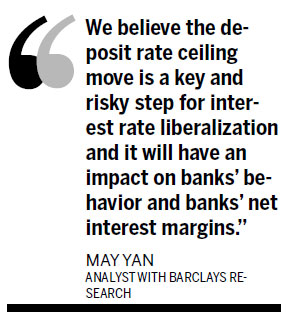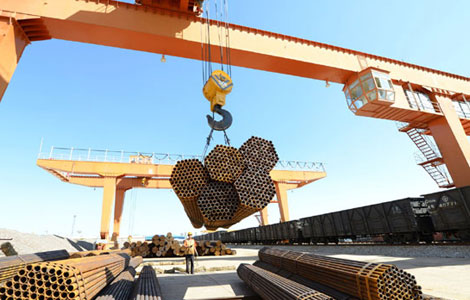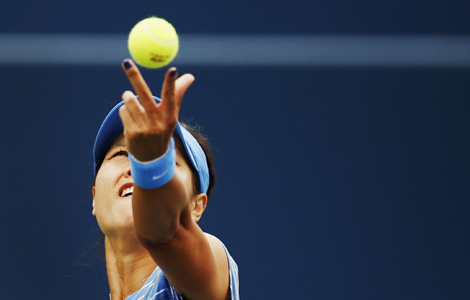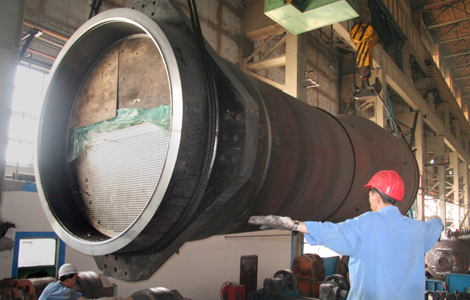Medium-, long-term deposit rates increase
Updated: 2013-08-08 06:38
By Wu Yiyao in Shanghai (China Daily)
|
||||||||

More commercial banks are offering the highest rates legally allowed for medium- and long-term yuan deposits as competitive and liquidity pressures intensify.
The banks are offering 10 percent more than the benchmark interest rates, which is the upper limit under current rules.
Analysts said that more banks are likely to follow suit as China pursues interest-rate liberalization. However, they said, abolishing the ceiling on deposit rates may be a longer, more complex process than the recent removal of lending rate floors.
As of Wednesday, more than 10 banks were offering 5.225 percent interest rates on five-year term deposits in Beijing, Shanghai and other big cities, according to bankrate.com.cn.
In Beijing, China Everbright Bank Co and Ping An Bank Co Ltd were offering the 10-percent premium on two-year, three-year and five-year term deposits. Guangdong Development Bank Co was offering the premium on two-year and three-year term deposits, the banks' brochures show.
The current benchmark interest rates for time deposits set by the People's Bank of China, the central bank, are 3 percent for one-year terms, 3.75 percent for two-year terms, 4.25 percent for three-year terms and 4.75 percent for five-year terms.
Shanghai resident Shu Meiyun, 65, recently moved a 100,000 yuan ($16,340) deposit to take advantage of the premium rate. "My returns will increase 475 yuan per year, not a big sum but good enough," said Shu.
Low savings returns may fatten lenders' profit margins, while higher deposit rates are positive for China's households and economic growth in the long run, said analysts.
"Low returns on bank deposits, below the rate of inflation, have been crimping income and impairing depositors' ability to spend. Low consumption definitely doesn't do anything for domestic demand growth," said Wu Yinzhou, an analyst with Shanghai Fulun Consultancy.
Lower-income households often have no other investment choices, and low deposit returns actually dent their already-low disposable income, said Wu.
Low bank rates also force many savers to speculate for higher returns, putting money into real estate, art and even garlic bulbs, which actually adds risk to their portfolios, said Wu.
The central bank's recent move to abolish the lending rate floor, which was 70 percent of the benchmark rate, reconfirmed policymakers' determination to push financial sector reform, which is expected by the market. It is also an essential step to the liberalization of interest rates.
The scrapping of the loan rate floor won't have much impact on bank lending rates, as banks don't compete on loan pricing and rarely lend at the floor rate. Therefore, the real economy may not get lower funding costs, and economic growth may not benefit much from this move, according to a recent Barclays Research report.
Before the abolition of the rate floor, benchmark loans cost 6 percent to 6.55 percent, according to PBOC data.
Removal of the savings rate cap, which has been widely discussed, may take more time, said analysts. "We believe the deposit rate ceiling move is a key and risky step for interest rate liberalization and it will have an impact on banks' behavior and banks' net interest margins," said May Yan, an analyst with Barclays Research.
Deposit rate liberalization is conditional on many other things, including corporate governance improvement and deposit insurance, as well as an exit system for financial institutions.
wuyiyao@chinadaily.com.cn
(China Daily USA 08/08/2013 page15)
Most Viewed
Editor's Picks

|

|

|

|

|

|
Today's Top News
China's innovation prowess looms large
US, EU concerned about stalemate in Egypt
EU to continue anti-subsidy solar probe
Nation poised to import more GMO products
Illegal Shanghai stay costs foreigner 10,000 yuan
China to be leading business travel market
Cards make paying global tuition easier
Probes not targeting foreign brands
US Weekly

|

|












